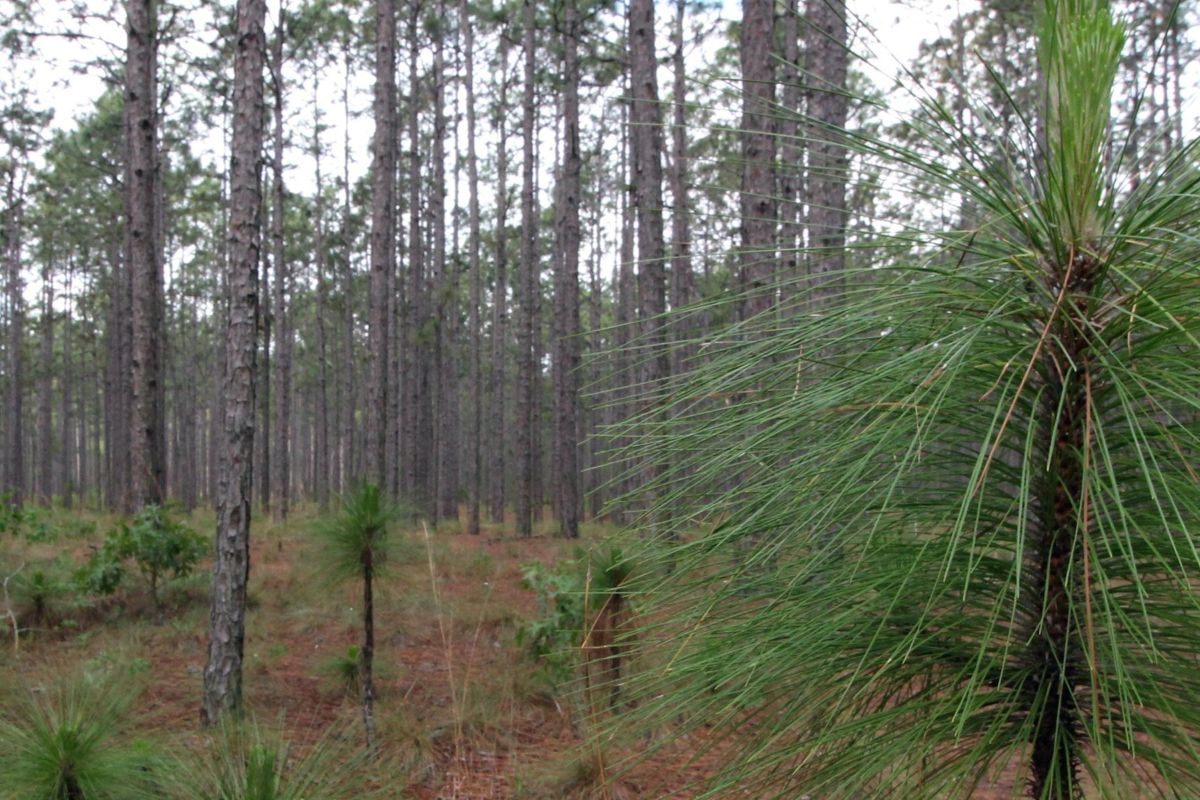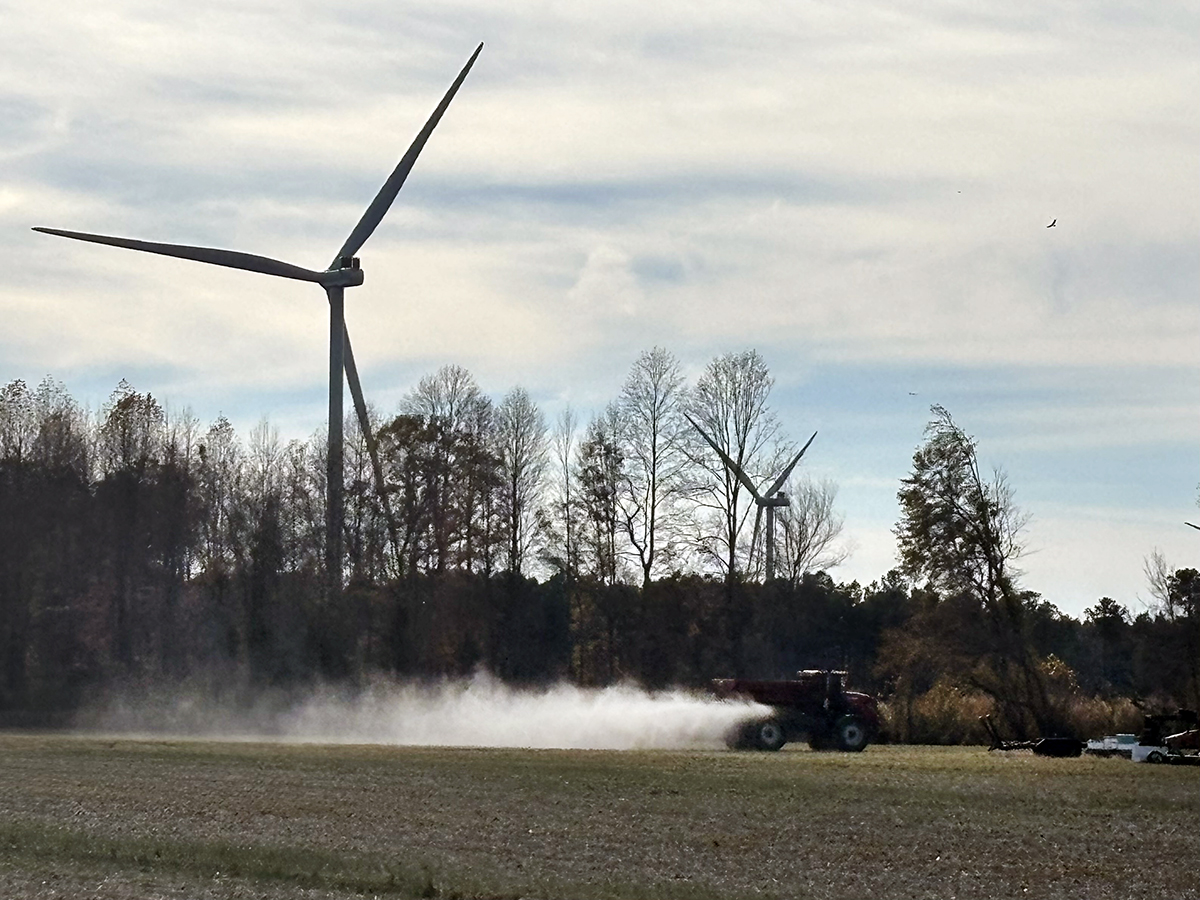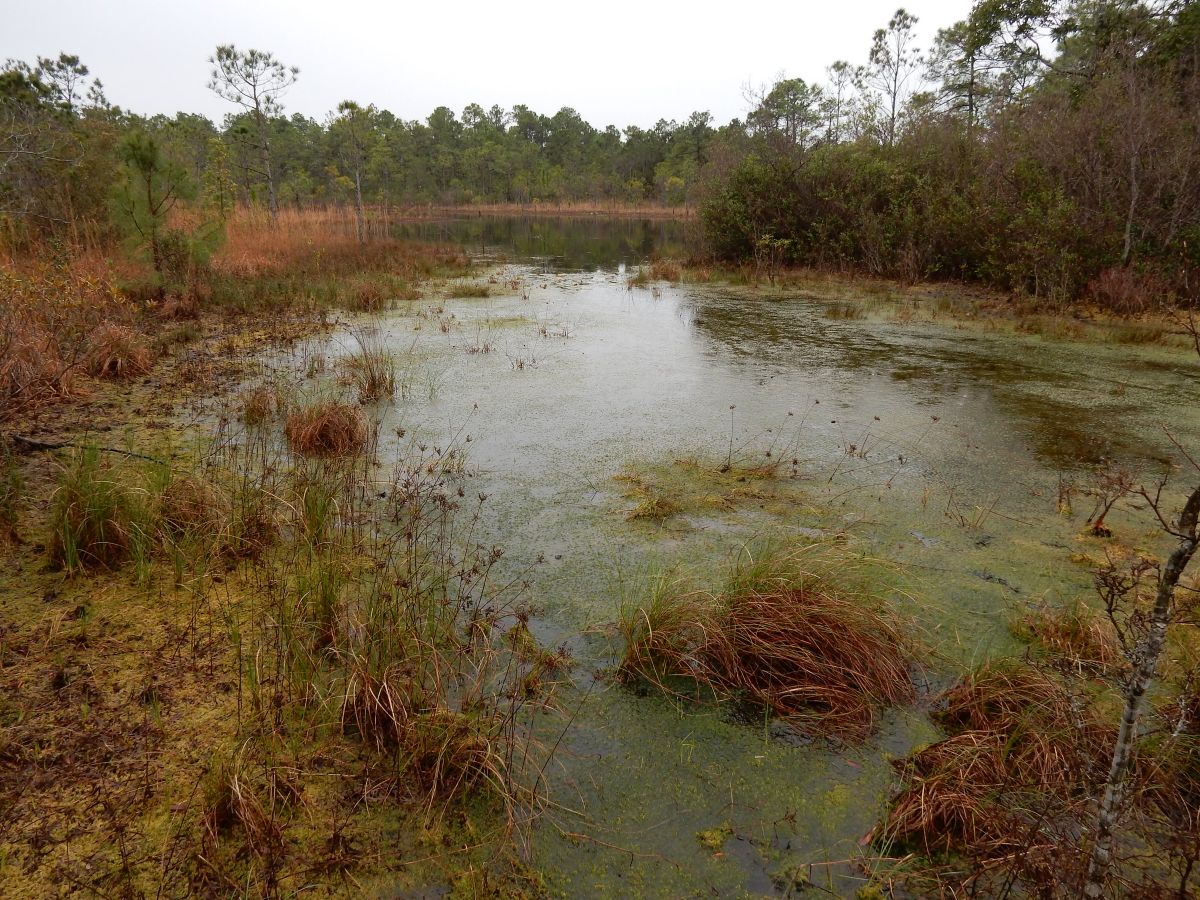
The U.S. Forest Service estimates that the cone crop for longleaf pines in the Southeast will be “poor for 2025,” according to the “Longleaf Pine Cone Prospects for 2025” report released in June.
Because of the anticipated seed shortage that comes with a low estimate of seed-producing cones for the third year in a row, The Longleaf Alliance is scouting for potential locations to harvest in the fall.
Supporter Spotlight
Based on observations collected earlier this year from low-density stands of mature longleaf pines in 10 study sites, researchers estimate the average for seed-producing cones is 12.4 per tree this fall.
The study, which looked at state-managed parks in North Carolina, South Carolina, Georgia, Florida and Louisiana, defines a good crop as 50 to 99 green cones per tree, a fair crop as 25 to 49, poor as 10 to 24, and a failed crop as less than 10 seed-bearing cones per tree.
Once plentiful, the longleaf pine could be found on an estimated 90 million acres in the coastal plains between southeast Virginia to eastern Texas. During the Colonial era, the trees were felled for timber and naval stores. Demand grew exponentially when the turpentine industry took off at the turn of the 20th century, nearly stripping the ecosystem of the native pine. Today, its estimated that there’s around 5 million acres remaining.
The alliance is a nonprofit organization that was established in 1995 and is devoted entirely to longleaf pine ecosystems.
“With a fraction of longleaf pine acres remaining in the Southeast, much of this work is focused on reestablishing longleaf pine. We are planting trees that can outlast us, and it is essential that landowners are up for success from the beginning,” The Longleaf Alliance Vice President for Operations Ad Platt explained to Coastal Review.
Supporter Spotlight
The Longleaf Alliance is a founding member and leader within America’s Longleaf, a landscape collaborative effort of public and private partners that supports range-wide efforts to restore and conserve longleaf pine ecosystems.
The study site for North Carolina, Bladen Lakes State Forest, is expected to have an average of 27 cones per tree this fall. The more than 33,000-acre state-owned land is in Bladen County, roughly between Wilmington and Fayetteville near Elizabethtown.
Platt said that with Bladen Lakes State Forest being one of only three locations in the report predicted to have a fair cone crop this fall, it is optimistic news for the longleaf cone in North Carolina. The other fair cone crop areas are in Georgia and Florida.
The South Carolina site is estimated to have a poor crop this year, and the remaining six sites are expected to have less than 10 cones per tree, and are in the failed category.
By estimating the number of green, or productive, cones per tree, the seed volume can be approximated. The minimum cone crop needed for successful natural regeneration is 750 green cones per acre, or around 30 cones per tree with 25 seed-bearing trees per acre, the study states.
The 60-year regional cone production average for longleaf pine is about 27 green cones per tree, but the year-to-year average varies widely. For example, 1996 had the single best cone crop at an average of 115 cones per tree, but 1995 had a 41-cone average, and 1997 had a 17-cone average.
This year’s numbers are better than 2024, which “failed” with an estimate of almost seven cones per tree, and for 2023, the estimate was 10.3, according to the report.
Platt explained that the longleaf pine is a masting species, which means that instead of producing seeds consistently each year, there are some years with an exceptionally large number of pine cones and seeds, followed by years with relatively few. So, this pattern of low cone production is somewhat expected.
“For that reason, longleaf pine growers collect as much seed as they can when cone crops are good. The problem is that the seed supplies needed for longleaf pine seedling production are now limited after subsequent years of poor cone production,” he explained, adding that the last good crops documented in the annual Longleaf Pine Cone Prospects Report occurred in 2022.
“Complicating this issue are recent patterns of large, strong storms when pine cones are maturing in the summer and fall. While future cone production is strongly correlated with hurricanes, with positive trends two years after a storm event, strong winds damage that year’s cone crops and mature longleaf forests, as was observed in 2024 with Hurricane Helene in Florida, Georgia, and South Carolina,” he said.
Platt continued that the natural variation of longleaf pine cone production means that even when crops are forecast to be low, there is likely a good longleaf cone crop somewhere.
“The challenge is finding it,” he continued. “If you are lucky enough to have mature longleaf, please assess what kind of cone production you may have this summer.”
Platt said that’s best done on a clear morning with the sun at your back and using binoculars to count the large, developing green cones. Fair or better cone crops include 25 or more cones per tree, with 25 trees per acre.
Landowners with fair or better cone crops may have a potential income opportunity if their longleaf stands are large enough and easily operable, meaning they’re low density with machine access for collection. Pine cone harvesting crews need a decent cone crop on a large enough acreage in the area to maximize their efforts during the short four-week collection window.
“Longleaf pine seedlings grown in tree nurseries support 100 to 150,000 acres planted in longleaf pine each year. To reach the range-wide acreage restoration goal of America’s Longleaf Restoration Initiative, longleaf pine seedling production must meet the growing demand from landowners interested in supporting this imperiled landscape,” Platt said.
Observations of mature longleaf pine trees can be submitted to The Longleaf Alliance through an online survey.








